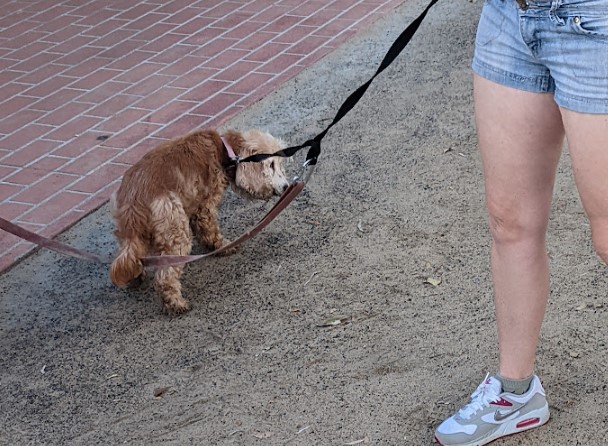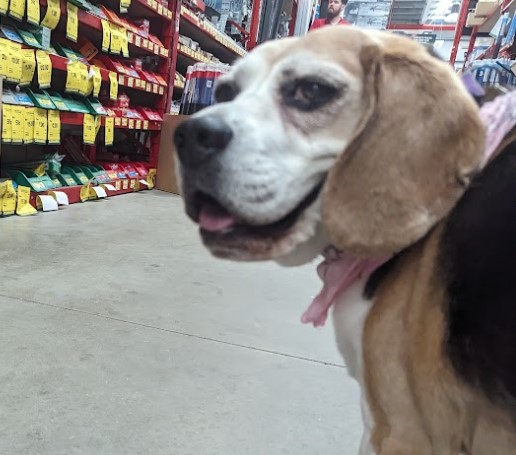As the sun gently sets on the picturesque beaches of the Gold Coast, I, Mel from All For Furry Friends, find myself reflecting on the countless paws I’ve had the joy of accompanying along the shoreline. Today, I want to share a heartwarming chapter of my dog-walking diary with you, focusing on a very special group of furry friends: our beloved senior dogs.

Understanding the Unique Needs of Senior Dogs
Walking an old dog isn’t just a stroll in the park—it’s an art and a science. Dogs that have graced us with their loyalty for 13 years or more have earned their stripes, and with this venerable age, they carry needs unique to their golden years. These pooches may not sprint like they once did, or may even saunter with a hint of hesitation, but each step they take is a testament to a life well-lived and a love well-given.
Recognizing When Your Dog Becomes an ‘Old Dog’
Recognizing when your faithful companion enters their senior years is a subtle but crucial part of caring for them properly. Let me walk you through the telltale signs and considerations you need to be aware of, as I’ve learned through my experiences at All For Furry Friends.
Identifying Age-Related Changes
Not all dogs show their age in the same way or at the same time. Generally, larger breeds may reach their golden years sooner than smaller breeds. However, the magic number often cited is around the dogs age of 7. But for the purposes of our old friends who are 13 years and beyond, there are specific signs I look for:
- Graying Muzzle: Just like humans, dogs tend to go gray as they age, often starting around the muzzle and face.
- Slower Movements: As dogs grow older, they might take a bit longer to get up from lying down or be less eager to leap for that frisbee.
- Cloudy Eyes: A common sign of aging in dogs is a slight cloudiness in their eyes, or, in some cases, the development of cataracts.
- Hearing Loss: If your dog doesn’t respond to commands as quickly or seems startled when you approach them unseen, they might be experiencing hearing loss.
The Shift in Exercise Requirements
An old dog’s exercise needs don’t just vanish, but they do change. As an experienced walker, I’ve noted that senior dogs often require:
- Shorter, More Frequent Walks: Rather than one long walk, several short jaunts can be more beneficial for an older dog, helping to keep their joints moving without overexertion.
- Gentler Exercises: High-impact activities like running or jumping should be replaced with gentle walks or swims.
- Rest Periods: Senior dogs may need more frequent breaks during a walk. I’ve found that allowing these dogs to set their own pace is crucial.

Preparing for the Walk: Safety First
As an experienced dog walker in the vibrant landscapes of the Gold Coast, I’ve learned that ensuring the safety of our senior canine companions is paramount. The warm, salty breezes and the soft murmur of the ocean set a serene backdrop, but preparation is key before we embark on any journey, no matter how tranquil it may seem.
Vet Check-Ups and Health Clearances
Before adjusting your old dog’s exercise routine, a vet check-up is essential. I always recommend that owners of the dogs I walk at All For Furry Friends get a full dog’s health clearance. This helps to understand any limitations they might have, such as heart conditions or arthritis, ensuring we’re not causing harm during our walks.
Choosing the Right Gear for Comfort and Support
The right gear can make a significant difference in the comfort and safety of your senior dog during walks. Here’s what I’ve found useful:
- Harnesses: A supportive harness can alleviate pressure on your dog’s neck, which is especially important for those with tracheal or respiratory issues.
- Leads: A sturdy, comfortable lead is important, but I prefer ones that give me quick control to keep old dogs safe from harm without restricting their freedom too much.
- Footwear: On the Gold Coast, the pavement can get hot. For tender paws, especially those of an old dog who might drag their feet a bit, protective booties can prevent burns.
- Reflective Gear: If we’re walking in the early morning or evening, reflective gear is essential to ensure our old friends are visible.
Tailoring the Walking Experience to Your Senior Dog
Walking an older dog is a personalized experience that requires a considerate touch and an attentive eye. It’s not about the distance covered or the speed; it’s about ensuring the walk nourishes both their physical health and their spirit. Here’s how I tailor the walking experience to each senior dog’s needs at All For Furry Friends.
Pacing the Walk According to Your Dog’s Stamina
The first step is understanding and respecting your old dog’s current stamina and fitness level. This might mean:
- Starting Slow: We begin at a pace that’s easy for them, allowing them to set the tempo.
- Observing Their Behavior: If they’re lagging behind or panting heavily, it’s time to slow down or take a break.
- Gradually Increasing Activity: As they build endurance, we can gradually extend the length of the walks or incorporate gentle slopes.
Choosing the Right Routes on the Gold Coast
The Gold Coast offers a myriad of picturesque routes that can be perfect for older dogs if chosen wisely:
- Flat, Even Surfaces: I choose paths that are flat and smooth to prevent any unnecessary strain on their joints.
- Quiet Areas: Bustling environments can be overwhelming, so I prefer quiet parks or less populated beach paths where they can walk peacefully.
- Shaded Paths: Especially in our warm climate, ensuring there’s plenty of shade helps prevent overheating and provides comfortable spots for rest.
Dealing with Weather Conditions
The weather plays a significant role in the comfort of a walk, particularly for senior dogs who may have a harder time regulating body temperature.
- Cooler Times of Day: In the summer months, I walk the dogs either in the early morning or late afternoon to avoid the midday heat.
- Protective Clothing: On cooler days, a light jacket can help an old dog with thinning fur stay warm.
- Adapting to Rain: A light doggy raincoat can keep them dry and comfortable when the clouds roll in.
Overcoming Common Challenges While Walking an Old Dog
Walking a senior dog can come with its set of challenges. Through my years with All For Furry Friends, I’ve encountered various hurdles and learned how to navigate them to ensure each walk is a positive experience for these old souls.
Joint Issues and Mobility Concerns
Arthritis and other joint issues are common in older dogs, which can make walking uncomfortable. Here’s how I handle these challenges:
- Joint Supplements: I often discuss with owners the possibility of joint supplements or medications that could help ease discomfort.
- Gentle Terrain: I choose routes that are easy on the joints, avoiding steep hills or steps.
- Support Harnesses: For dogs with significant mobility issues, a support harness can help them get around more comfortably, allowing for gentle assistance when needed.
Sensory Impairments: Sight and Hearing Loss
Many senior dogs face diminished sight or hearing, which means they rely more on their other senses and on the trust they place in me.
- Consistent Routes: Familiar routes can provide comfort and security for dogs with vision impairment.
- Verbal and Physical Cues: For those hard of hearing, I use more hand signals or gentle leash guidance.
- Staying Close: Keeping these dogs close ensures they don’t become disoriented or wander into harm’s way.
Recognizing and Managing Pain and Discomfort
Pain management is a critical component of caring for senior pups. As their walker, I’ve become adept at recognizing the subtle signs of discomfort:
- Pain Signs: Limping, panting, or reluctance to move can all indicate pain.
- Regular Breaks: I ensure there are plenty of opportunities to rest during a walk.
- Communication with Owners: Any signs of chronic pain are communicated to the owner for further veterinary assessment.
Additional Considerations for Walking an Old Dog
Apart from the common challenges, there are additional aspects I consider:
- Mental Stimulation: Keeping their minds active by allowing them to sniff around and explore is just as important as regular exercise.
- Socialization: Interaction with other dogs can be beneficial, but I always keep the comfort and energy levels of my senior companions in mind, choosing playmates that are calm and gentle.
- Emergency Preparedness: Carrying a basic first-aid kit and having a plan in case the dog needs immediate veterinary attention is part of my routine.
Conclusion
In closing, walking an old dog, particularly those as seasoned as 13 years and older, is a journey that requires a tender blend of patience, observation, and adaptation. It’s a practice that has enriched my life immeasurably here at All For Furry Friends along the beautiful expanses of the Gold Coast.
We must remember that each slow step tells a story, and every gentle wag of their tail speaks volumes of their enduring zest for life. To walk an old dog is to walk with history, with loyalty, and with a love that has deepened through the years. It’s a privilege that comes with responsibilities: to honor their pace, to soothe their aches, and to celebrate their companionship.




